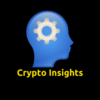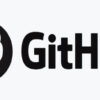
As the world of blockchain technology evolves, the importance of decentralized governance and strong, engaged communities cannot be overstated. For a blockchain network to thrive, it must balance technical innovation with effective governance and active community participation. Polygon (MATIC), a Layer 2 scaling solution for Ethereum, has successfully achieved this balance by establishing a decentralized governance model and nurturing a robust, dynamic community.
In this article, we will explore how Polygon’s governance framework operates, the role of the community in shaping the network’s future, and how these factors contribute to its long-term sustainability and success.
Understanding Polygon’s Governance Structure
Polygon’s governance framework is designed to ensure that decisions affecting the network are made collectively by its community and stakeholders. This decentralized approach enhances security, fosters transparency, and aligns the network’s development with the interests of its users. Here’s a breakdown of how governance works on Polygon:
1. Decentralized Governance through MATIC Token Holders
At the heart of Polygon’s governance model are MATIC token holders, who play a central role in shaping the network’s future. MATIC is the native utility token of the Polygon network, used for staking, governance, and paying transaction fees. Through their ownership of MATIC tokens, users gain the right to participate in the decision-making process.
MATIC token holders can:
- Vote on key proposals: Token holders have the power to vote on protocol upgrades, parameter changes, and other important governance proposals. Their votes influence the direction of the network and ensure that decisions are made democratically.
- Submit governance proposals: Community members can submit proposals for changes or improvements to the network. These proposals may cover topics such as network upgrades, security enhancements, or ecosystem development initiatives.
Polygon’s governance model is built on the principle of on-chain governance, where voting takes place directly on the blockchain. This ensures transparency and trust, as all decisions are recorded publicly and verifiable by anyone.
2. Polygon Improvement Proposals (PIPs)
Much like Ethereum’s Ethereum Improvement Proposals (EIPs), Polygon uses Polygon Improvement Proposals (PIPs) as a structured process for implementing changes to the network. PIPs serve as formal proposals submitted by developers, community members, or stakeholders to suggest improvements, fixes, or new features.
The process for submitting and approving PIPs involves several stages:
- Proposal submission: A community member submits a PIP, detailing the changes they propose and providing a rationale for the update.
- Community discussion: The proposal is discussed by the community, with members offering feedback, raising concerns, or suggesting modifications.
- Voting: Once the proposal has been thoroughly discussed, MATIC token holders can vote on whether to approve or reject it. The outcome of the vote determines if the proposal will be implemented.
This open and democratic process ensures that Polygon remains responsive to the needs and interests of its community, while maintaining a structured path for network evolution.
3. Polygon’s Validator Network
Polygon’s governance also extends to its validator network, which plays a crucial role in securing the network and processing transactions. Validators are responsible for producing blocks and ensuring the integrity of the network’s operations.
MATIC token holders can participate in the governance process by staking their tokens with validators. In return for staking, token holders earn rewards, and validators are incentivized to act in the network’s best interest.
The validator network is an essential component of Polygon’s decentralized governance structure, as it ensures that power is distributed across multiple actors, reducing the risk of centralization and increasing the network’s security and stability.
The Role of the Community in Polygon’s Success
Beyond its formal governance structures, Polygon has cultivated a vibrant, global community that actively contributes to its growth and development. Polygon’s success is as much a result of its engaged community as it is of its technical innovations. Here’s how the community plays a key role in the Polygon ecosystem:
1. Community-Led Development and Innovation
Polygon’s open-source nature allows developers from around the world to contribute to its ecosystem. Many of the most exciting projects and dApps on Polygon have been developed by the community, rather than by a centralized team.
- Developer Community: Polygon’s developer community is highly active, with numerous initiatives aimed at fostering innovation. For example, Polygon offers developer grants, hackathons, and educational resources to encourage the creation of new dApps, DeFi platforms, and blockchain solutions.
- Third-Party Integrations: Many popular projects, including DeFi platforms like Aave, SushiSwap, and QuickSwap, have integrated with Polygon, largely due to community-led initiatives and collaborations.
The community’s contributions to Polygon’s development ensure that the network remains a dynamic and innovative platform, capable of meeting the evolving needs of its users.
2. Educational and Outreach Initiatives
The Polygon community is also actively involved in education and outreach, helping onboard new users and developers to the ecosystem. Community members create tutorials, guides, and online resources to help others learn how to use Polygon, build on its network, and participate in its governance.
Polygon’s community-driven approach to education has made it easier for developers and users alike to transition from Ethereum to Polygon, helping the network grow its user base and attract new talent.
3. Social Media and Online Communities
Polygon’s global reach is reflected in its presence across various social media platforms and online forums. Platforms like Twitter, Reddit, and Discord serve as hubs for discussion, debate, and collaboration. The community actively shares news, technical insights, and project updates, fostering a sense of belonging and engagement among its members.
These online spaces also serve as avenues for community members to voice their opinions on governance issues, contribute ideas for ecosystem growth, and collaborate on projects that benefit the network as a whole.
Polygon DAO: A New Era of Decentralized Governance
In line with its commitment to decentralized governance, Polygon has also been working towards transitioning to a more decentralized autonomous organization (DAO) structure. The goal of this transition is to hand over even more decision-making power to the community and further decentralize the network.
Through a Polygon DAO, the community would have greater control over:
- Ecosystem fund allocation: Deciding how funds are distributed to support new projects, grants, and community initiatives.
- Protocol upgrades: Making decisions on key technical upgrades to the Polygon protocol, such as improvements to scaling solutions or network security.
- Governance rules: Establishing guidelines for how the DAO itself operates, including voting procedures and decision-making processes.
The shift to a DAO structure would represent a significant step towards Polygon’s vision of true decentralization, empowering the community to take an even more active role in shaping the network’s future.
The Benefits of Polygon’s Governance and Community Approach
Polygon’s governance and community-driven approach offer several benefits for the network and its users:
1. Decentralized Decision-Making
By empowering MATIC token holders and validators to participate in governance, Polygon ensures that no single entity has control over the network. This decentralization enhances security, reduces the risk of censorship, and aligns the network’s development with the interests of its users.
2. Increased Innovation
Polygon’s community-driven development model fosters innovation, as developers from around the world can contribute to the ecosystem. This open-source, collaborative approach has led to the creation of a rich ecosystem of dApps, DeFi platforms, and blockchain tools.
3. Community Engagement
Polygon’s active community plays a crucial role in promoting the network, educating new users, and driving ecosystem growth. This strong sense of community helps ensure that Polygon remains a leader in the blockchain space, with a growing user base and continuous development.
4. Sustainability and Growth
Polygon’s governance structure and community involvement help ensure the network’s long-term sustainability. By encouraging participation from token holders, validators, and developers, Polygon remains adaptable and able to evolve in response to new challenges and opportunities.
Conclusion: The Importance of Governance and Community for Polygon
Polygon’s governance and community aspects are key pillars of its success. Through its decentralized governance model, MATIC token holders and validators have a direct say in the network’s future. At the same time, Polygon’s vibrant community of developers, users, and enthusiasts contributes to its growth, innovation, and global reach.
As Polygon continues to evolve, its commitment to decentralization, transparency, and community engagement will be essential to its long-term success. Whether through the upcoming transition to a DAO or ongoing community-driven development, Polygon is well-positioned to remain a leading force in the blockchain ecosystem.










